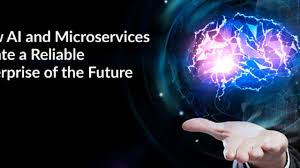Source: devops.com
Enterprise adoption of microservices is continuing to rise. Its popularity is so strong that 86% of development professionals internationally expect microservices to become the default application architecture within the next five years. Looking out even longer, nearly all professionals see microservices becoming their company’s default application architecture.
At its core, a microservice approach centers on the idea of breaking up complex enterprise software into smaller, more manageable pieces, containing everything from the operating system to the platform to the framework to run time and dependencies, packaged as one unit of execution.
By dividing an application into smaller stand-alone services, each performing a single function and communicating over the network to work together, microservices offer increased modularity and make applications easier to scale and faster to develop. In a world of ever-increasing apps, websites and digital experiences, there are immense benefits to deploying microservices.
However, the use of microservices is no silver bullet and, for all their benefits, they have their own limitations and challenges. When it comes to deploying microservices, scale, complexity and constant change are the new realities. Microservices architecture introduces complexity with respect to network latency, network communication, load balancing, fault tolerance and message formats. With great flexibility also comes a higher risk of something slipping through the cracks. Managing many services requires understanding deep structures, dependency graphs and more.
Process scalability is another challenge. An enterprise can run one cloud-based service with relative ease, but simultaneously running dozens of services across multiple clouds quickly becomes a complicated juggling act. In fact, with all the moving parts that come with microservices, it is becoming increasingly difficult to manage these processes manually.
No wonder that, along with the rise of microservices, we have seen the emergence of auto-remediation/self-healing capabilities. To the untrained eye, the terms auto-remediation and self-healing would seem to be the answer, but don’t be fooled. Many of these features, although making the management of microservices easier, use static thresholds for data points such as waiting time, throughput, message queue size and more. When the thresholds are passed, the system will correct or self-heal as necessary. Although helpful, they’re not necessarily smart or intelligent—and that is where AI can help.
Advanced Self-Healing and Self-Defense
AI can help solve some of the hardest problems facing microservices today. Below are a few achievements we’re already seeing AI accomplish:
- Load Prediction: Understanding the load on the system and acting on it before it happens will allow systems to provision more resources before they’re needed. Provision of resources is not just limited to the network and number of tasks running; AI can trigger customer support representatives to be on hand when—and only when—needed.
- Decay Detection: Anomaly detection is built into a lot of monitoring services and is efficient at detecting spikes, loads and abnormal behaviors; however, detecting a service decay, even gradual or subtle, is difficult. AI can help systems recognize whether services are reacting differently over time and what the reasons are for this decay. It also has the potential to be more effective in identifying bugs based on studying clusters of microservices having continuous issues.
- Resource Planning: As the scale and complexity of microservices grows, so does the use of the cloud. The ability to plan ahead using smart resource management could save significant costs while maintaining a stable and robust service.
- Security: Security is already leveraging AI in many places by discovering attack patterns based on known behaviors. Leveraging these capabilities at the network and database level can improve security for actions done by an authorized person. If you can understand the usage patterns and act on them, you can define a more secure system for all users.
Benefits aside, using AI is not without pitfalls. For example, despite all its potential, the so-called state-of-the-art AI models are still quite primitive when compared to what they have the potential to achieve. Another issue is how to manage the possibility of bias creeping into AI models to avoid unintended consequences. Technology professionals are already working on ways to solve these complications. However, it will take time to develop the right models, data sets and algorithms.
The Future
If the future of application architecture is truly to be dominated by the ever-increasing use of microservices, then those architectures will need to also be dominated by AI. The reality is microservices are simply becoming far too complex for humans to manage on their own effectively. Because of the dynamic nature of their structure, their complex dependencies and their sheer scale, machine learning must be applied to assist with monitoring and management tasks. AI is best suited to meet this challenge and tackle it head on.


